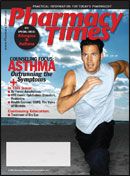Publication
Article
Pharmacy Times
Getting Customers Literate: Your Role in Health Care
Author(s):
For health education to be successful, the relationship between the pharmacist and the patient is paramount.
Ms. Heinze is a freelance writer based in Vancouver, British Columbia.

With the continued focus onpromoting patient adherenceto reduce overallhealth care costs, pharmacists areunder increasing pressure to findways to deliver health care educationat the same time that prescriptionvolumes are on the rise.
The standard answer to this is thedistribution of printed materials, deliveredwhen the patient receives theprescription or refill. While this offersvalue, it is not as effective as it couldbe if accompanied by a face-to-facecounseling session, argues Bill G.Felkey, BA, MS, professor emeritus ofhealthcare informatics in the PharmacyCare Systems department at AuburnUniversity in Auburn, Alabama. "Wehave research to show that the printedinformation does not create adherenceto the same level as a combinationof both oral and printed information,"he says. "The majority of pharmacistsright now also are not very happy withthe printed information because it contains,mostly, bad news."
Another issue is the amount of inaccurateinformation that patients canaccess. Numerous Web sites, and evenrespected mainstream news outlets,are guilty of publishing data that iseither out of context, too hastily summarizedto be of use, or just plainwrong. The upside, Felkey says, is thatafter a while, patients tend to give upconducting their own research. "TheInternet is not too great a threat tothe pharmacy because people becomeoverwhelmed when they are trying tonavigate through the ocean of informationthat is out there," he says. "Whatthey need, they quickly realize, is somebodyto help sort through which informationapplies to them, what is themost important thing they should takeaway, and how they should use theinformation."
Felkey notes that patients fail in followingtheir treatment recommendationsfor several reasons: (1) they donot know what to do; (2) how to do it;or worse, (3) they are not motivatedto abide by the suggested practices."The toughest of those 3 is motivation,"Felkey says. "What predicts thegreatest extent of how a patient willattempt to change their behavior toget the benefits of their prescriptionmedicine, or to do other treatments,or instituting lifestyle changes, is therelationship between the pharmacistand the patient."
Bill Ladwig, vice president of professionalservices at Lewis Drug inSioux Falls, South Dakota, labels thisrelationship as "paramount." He notes,however, that the biggest challenge hispractice faces is getting patients to takethe time to ask questions. "People areso rushed that they do not oftentimesstop and ask the questions that are so important for their own health," hesays. "We are trying to make peoplerealize that they need to take the timeto ask the questions and to slow theprocess down a bit."
At Leesburg Pharmacy in Leesburg,Virginia, pharmacists step up their contactwith patients by holding certainprescriptions back so that when thepatient comes to pick up the medicine,he or she must speak with the pharmacistfirst. "During the filling process,if it is identified that there is someneed to speak with the patient, wehold it in an area that we call 'specialhandling' to make sure that we dospeak with the patient," explains CheriGarvin, Leesburg's executive vice presidentand chief executive officer. "If itis something that we know has a lot ofside effects, or if there is a potential fora drug interaction that we want to discusswith the patient, we hold it behindthe counter with the pharmacist untilthe patient comes."
Lewis Drug attempts to change theirpatients' behavior—and therefore motivatethem to interact with the pharmacist—through the media, and recentlyran a campaign entitled "Just Ask."The spots featured several differentpharmacists delivering a few lines, theoverlaying message being, "Just ask—even if you are late. Just ask—even ifthe kids are crying." Ladwig says, "Weare trying to reestablish the thoughtprocess. Pharmacists are accessible;we need to make ourselves accessiblefor this purpose." He adds that pharmacistsshould seize any opportunity theyhave to make contact with the patient,be that through counseling sessions oreven other activities, such as speakingengagements at local schools.
Ladwig declares that this meansmore than simply giving patients theopportunity to ask questions. "The 'doyou have any questions for the pharmacist?'method is not a very successfulmodel," he says. "You need to actuallystop and talk to the person to say, 'thisis what this is for.'"
In the past, some pharmacists worriedthat they would experience reticencefrom other members of themedical community when they presentedthemselves as another source ofcounseling in the bigger picture. Thishas decreased, largely because doctorsare pressed for time. "Because of ourmanaged care stresses, physicians arespending less and less time with theirpatients," Felkey says. "It's not a turfissue about who should be doing theeducation. Physicians are increasinglyrelying on pharmacists to do a greateramount of education—especially aboutanything related to the drug product."
Pharmacists, too, face time constraints,and will continue to do soas their distribution loads increase."Because of the decreased reimbursementfor the prescription, you have toincrease your volume in order to makethe same money as you did last year,"Felkey says. This competes with theemphasis on the importance of providinghealth education, which is underlinedwhen aspiring pharmacists enrollin school. "We are trying to make ourstudents realize that pharmacy's futureis based on how valuable they are consideredin the health care system asprofessionals who can produce desiredoutcomes in patients, and that has gotto start with their educational role."
Garvin agrees that time is an issueto everyone—physicians, patients, andpharmacists—and she hopes that in thefuture, a larger number of insurancecarriers will recognize the benefits ofservices like medication therapy management(MTM), opening the door forreimbursement for these counselingsessions. "If you step out from behindthe counter to counsel somebody, ormaybe they have asked for a recommendationon an OTC medication, itis not like all of the other work goesaway," she says. "There is always thatpressure; the longer you spend talkingto them, the more your pile of workbuilds up in the pharmacy area. Timeconstraints are real." So, too, are staffingissues: pharmacies cannot simplyhave an extra pharmacist on hand in theevent that an MTM case may—or maynot—walk through the door. "If everyonecould see that we will be paid forthese services, I think we would have alot more of the profession on board."
Ladwig says that while robotics andautomation have helped with timemanagement, right now the way toprovide health care education is byrelying on assisting personnel. "The biggestaspect of pharmacy is the contactwith the patient," he says. "Successfulpharmacists realize the importance offilling prescriptions, but you still haveto make that patient contact."







